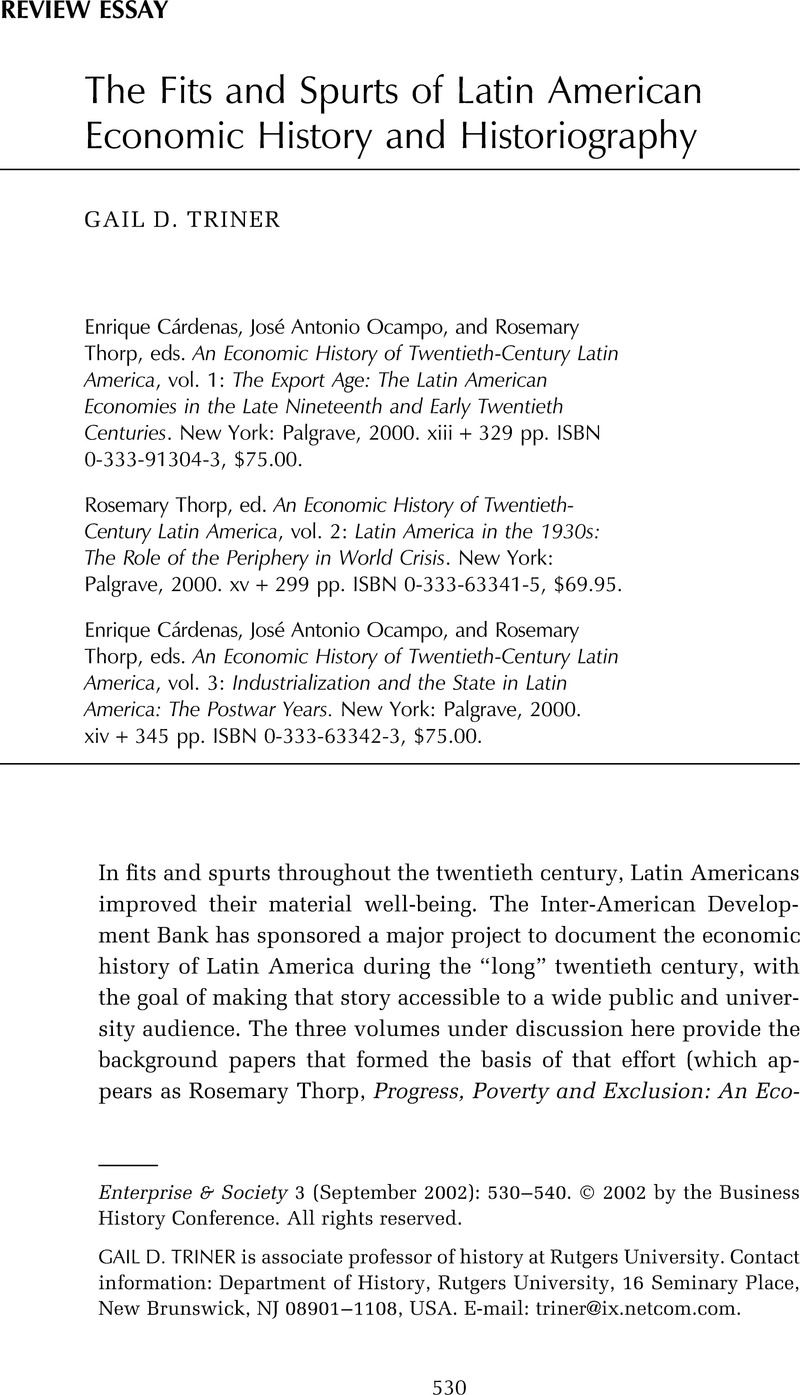No CrossRef data available.
Article contents
The Fits and Spurts of Latin American Economic History and Historiography - Enrique Cárdenas, José Antonio Ocampo, and Rosemary Thorp, eds. An Economic History of Twentieth-Century Latin America, vol. 1: The Export Age: The Latin American Economies in the Late Nineteenth and Early Twentieth Centuries. New York: Palgrave, 2000. xiii + 329 pp. ISBN 0-333-91304-3, $75.00. - Rosemary Thorp, ed. An Economic History of Twentieth-Century Latin America, vol. 2: Latin America in the 1930s: The Role of the Periphery in World Crisis. New York: Palgrave, 2000. xv + 299 pp. ISBN 0-333-63341-5, $69.95. - Enrique Cárdenas, José Antonio Ocampo, and Rosemary Thorp, eds. An Economic History of Twentieth-Century Latin America, vol.3: Industrialization and the State in Latin America: The Postwar Years. New York: Palgrave, 2000. xiv + 345 pp.ISBN 0-333-63342-3, $75.00.
Published online by Cambridge University Press: 10 May 2021
Abstract

- Type
- Review Essay
- Information
- Copyright
- Copyright © The Author(s) 2002. Published by Cambridge University Press on behalf of the Business History Conference. All rights reserved.
References
1 The volume originally appeared as Rosemary Thorp, ed., Latin America in the 1930s: The Role of the Periphery in World Crisis, Studies in Monetary History (London, 1984)Google Scholar.
2 Some economic historians consider that the collapse of the gold standard at the beginning of World War I marked the end of the open global economy.
3 Wider consideration of the global depression of the 1890s and its effects on commodity prices could have strengthened this perspective.
4 See, for example, reviews by Mamalakis, Markos, Journal of Latin American Studies 19 (May 1987): 214–15Google Scholar, and Finch, Henry, Bulletin of Latin American Research 5 (1986): 142–44.CrossRefGoogle Scholar
5 The country-oriented essays make clear that countries exercised varying degrees and forms of reaction.
6 ECLA provided organizational and institutional support for many promoters of import-substituting industrialization and its related social theories of structuralism and dependency from the 1950s through the 1980s.




